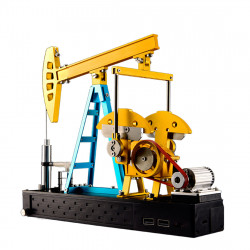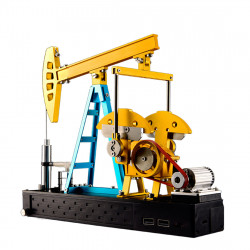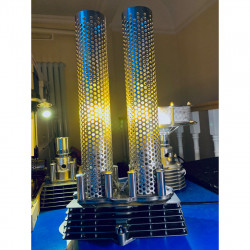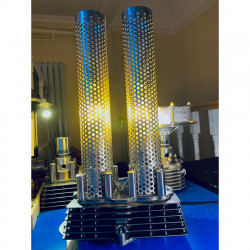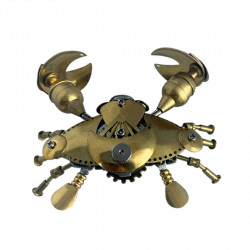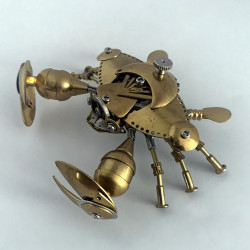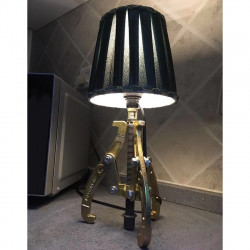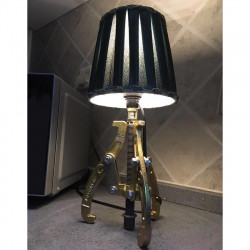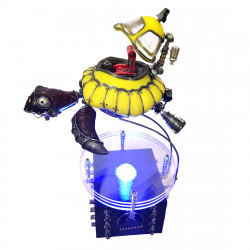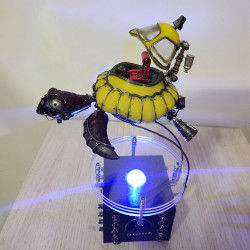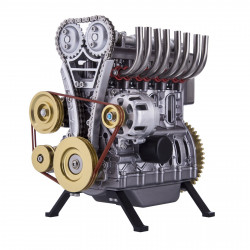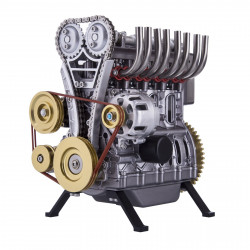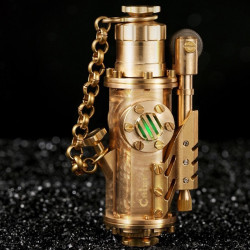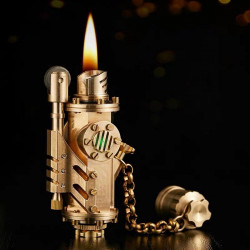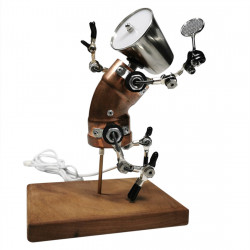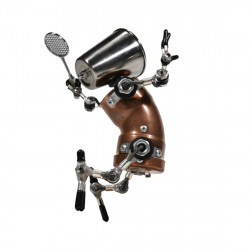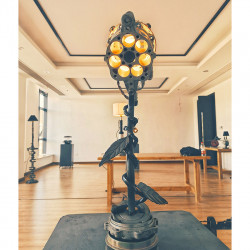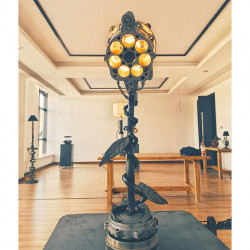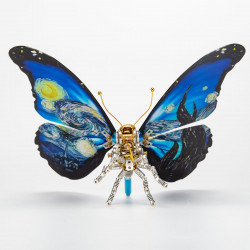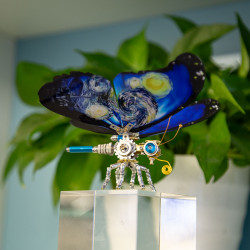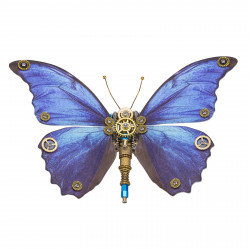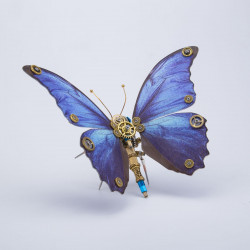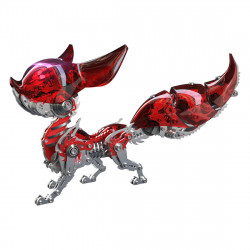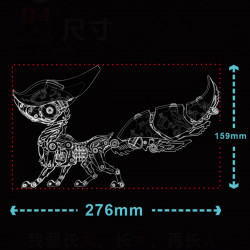Steampunk Models
What is the Best Steampunk Art Model Kit?
What is steampunk
A composite term that combines the words "steampunk" and "punk." The essential component of steampunk is steam.
While punk is an unpopular fringe subculture, the name "steam" originated with the first industrial revolution. Street writing is a style whose importance comes from the topic matter's independence from style.
In simple terms, the steampunk worldview mixes magic and science. It also delves into spiritual journeys. Additionally, it incorporates a blend of traditional and contemporary elements.
Steampunk literature predominantly takes place in Victorian England. Since steampunk's inception, it has become a distinct subgenre and is becoming increasingly popular.
What is steampunk art?
Literature is steampunk art's origin, which is the collision of previous and present technological advancements with innovative ideas. People recognized steampunk as a distinct art genre in 1980.
Radiation has affected various art design industries such as modern films, animation, video games, apparel, and more. It has also intersected with other art-related industries. For instance, steampunk art strongly influenced the comics of well-known Japanese cartoonist Hayao Miyazaki.
Steampunk art is pricier, but it's stylish and can be used to decorate sculptures, cartoons, animations, and everyday items. William Gibson and Bruce Sterling wrote the steampunk bible. They never imagined that future generations would be so captivated by the genre.
What is a steampunk assembly model?
Visit our blog to find out more if you're interested in steampunk fashion, art, or film. Check out our selection of the most excellent steampunk devices available now if you're seeking some incredible ones!
How Steampunk Art Works
While the general public may not be familiar with "steampunk," science fiction enthusiasts are. They will be in their life, where everything can mix with steampunk art. Make a range of artwork with steampunk elements, and consumers will enjoy a wide range of items in the steampunk style. So, how does one create steampunk art?
We must first gain an understanding of steampunk. Steampunk got its start as a notion from fantasy books. It is nostalgic futurism in the sense of referring to a hypothetical kind of work.
The five elements of steampunk are as follows: romance, wood and copper, installation, retro, and fuel. These five components, which have evolved progressively with the times, are essential to contemporary steampunk. These five components work together to enable steampunk art to endure in modern culture.
Next, please tell us how these steampunks are created. In the real world, steampunk-inspired artwork is ubiquitous. Most steampunk artists are self-taught hobbyists who create their works of art.
Typical materials used in steampunk art include leather, wood, glass, copper, brass, steel, and iron. Additionally, you'll need to utilize some standard drawing instruments, including T-squares, triangles, protractors, and compasses.
The supplies needed to create steampunk are typically not available in the marketplaces. Therefore, artists must look for them at pawnshops and other second-hand shops. It is evident from this that creating a flawless steampunk creation involves a great deal of planning.
Steampunk artwork typically features brown tones with dominating yellow and orange tones. However, various warm and cool hues are also frequently employed. Type "steampunk" into the Adobe Color search bar to learn more about steampunk color schemes.
Steampunk and casual play with the objects we own, adapt to the times and have fun with our life. We can enhance our interiors by incorporating vintage pieces, industrial elements, and leather furniture in a steampunk style. Just like how we decorate our homes.
Traditional steampunk artwork is often characterized by its brown color palette, resembling something we might actually see in real life. Of course, if that's your goal, some colors will obviously work better than others to generate a steampunk effect. However, you may also make your designs stand out in appealing ways by using colors other than these. I'm interested in hearing about the intersection of steampunk and the future.
20 Creative Cool Steampunk DIY Crafts
Are you trying to find some awesome DIY steampunk projects and clothes? Do you write science fiction? Alternatively, have you been enamored by sci-fi hybrid tech?
You are STEAMPUNKnati if the answer to these questions is "yes"! We have compiled a list of 20 steampunk crafts that are in style and easy to assemble on your own.
If you like steampunk, our collection of crafts can help you bring your ideas to life. Our crafts are the coolest and most creative.
1、Metal Model Kits Steampunk Octopus Jupiter Moon Night Light
2、Steampunk Mechanical Metal Mosquito on Glow Jupiter Moon Planet Series
3、Steampunk Brass Kerosene Lighter
4、Steampunk Model Dynastes Pupa
5、Steampunk Model Stag Beetle Pupa
6、Steampunk Metal Model Robot Basketball Player Brooke Fence Head Night Light Edition
7、Steampunk Metal Model Robot Table Tennis Player David Night Light Edition
8、Steampunk 3D Monarch Butterflies Model Building Kit
9、Steampunk Mechanical Mutant Chameleon Metal Lizard Kit Difficult Puzzle
10、Abandoned Whale Warship Metal Steampunk Assembled Model Kits With Light 3D Handmade Crafts
11、Little Green Beetle Steampunk Insect Metal Bug Model
12、Steampunk Deep-sea Anglerfish 3D Metal Ocean Model DIY Kit with Luminous Bulb
13、Steampunk Metal Brass Wasp Bug Model Insect with Light Handmade Assembly Crafts
14、Metal Steampunk Industrial Style Bowed Head Table Lamp Man FigureModels
15、Steampunk Style 3D Assembled Metal Golden Dragonfly Sculpture Model
16、Steampunk Metal Fire Fly Insect Bugs Puzzle DIY Model Kit with Display Base
17、Steampunk Spiritual Sparrow 3D Metal Kit
18、Steampunk Big Mosquito Insect Model Kit Metal Art Insect Statue-Blood007
19、Steampunk Octopus Ocean Warriors Sculpture Assembly Model Kit
20、Steampunk Bee Gather Honey on a Flower Bugs 3D Metal Assembled Model Kits
Please look forward to more introductions about steampunk products; see you in the next issue.

